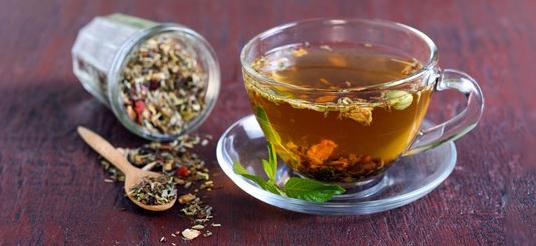
Get Rid of Headaches Right Now With This Tea
Millions of Americans suffer from headaches. The likelihood that you will be included in that number increases as you get older. Many factors contribute to more frequent headaches with age. Tension from lifestyle changes, hormonal fluctuations from menopause, and changes in blood pressure are just a few age-related problems that could be contributing to that aching head you are feeling. Of course, if your headaches are new or are presenting in a new fashion always seek appropriate medical advice before starting any treatment.
While there are many over the counter pain medicines available to soothe the pain using these types of medications too much can exacerbate other problems. Anti-inflammatories such as Ibuprofen have been known to increase stomach problems and are often contraindicated if you have other health problems. So think twice before reaching into the medicine cabinet and instead try out this natural, delicious tea.
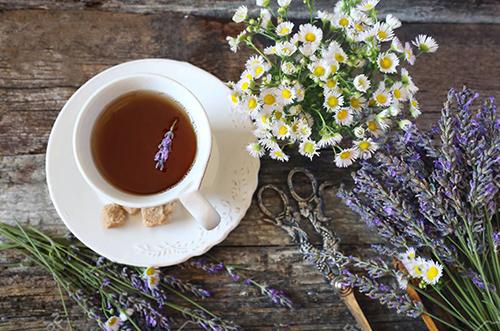
A blend of peppermint, chamomile, and lavender, this tea helps calm the mind and body, making it the perfect solution for headaches of all types. Commonly found in medicinal herb gardens, these three herbs are easily cultivated at home for use in this tea or other home remedies. While any single herb will help alleviate your headache, the three together produce a refreshing, delicious drink that should help no matter the cause of your headache.
Peppermint
Peppermint is very easy to grow. In fact, it grows so well it is best to grow in a container if you do not want it to take over your garden. You can plant seeds inside to be ready to move your seedlings outside after any danger of frost has passed. If you want to plant your seedlings take care to give them plenty of space to spread. Peppermint can quickly become invasive. For tea, you want to pick the dark green, fragrant leaves. If you find yourself with an excess of peppermint do not despair.
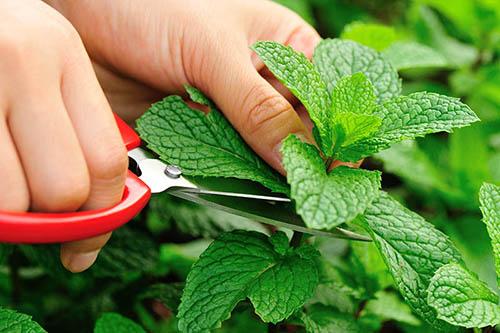
Clip the stems an inch below the leaves and hang upside down until the leaves are dry. Then store the dry leaves in an airtight glass container. That way you ensure you have plenty of homegrown peppermints to last through the winter months. Peppermint tea acts as a pain reliever and muscle relaxer, helping to alleviate headache symptoms. It also can help calm any nausea or stomach problems that can accompany headaches.
Chamomile
Known for its many uses in traditional medicine, chamomile is recognizable by its daisy-like flowers with white petals and yellow centers. Chamomile can be grown either from seed or divisions. Like most herbs, chamomile requires little attention once it is established in your garden. Water it infrequently, as it prefers dry soil. You can start the seeds indoors about six weeks before the last frost. Spritz the seeds with water and you should see germination in about two weeks.
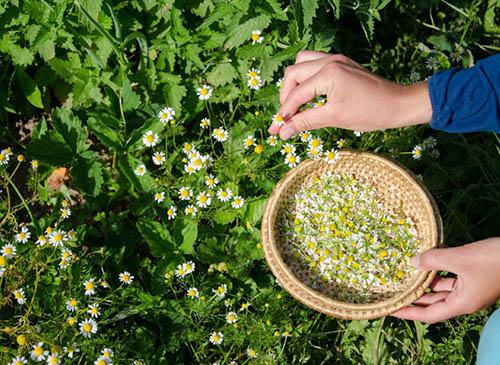
When the threat of frost has passed you can plant your seedlings outside 8-10 inches apart. German chamomile can reach 24 inches tall but Roman chamomile only grows to about 12 inches. You harvest the flowers when the petals have begun to fall back from the center of the flower. Snip the flowers from the stems. You next need to dry the flowers to prepare them to use in the tea. You can lay the flowers on a drying rack or screen in a cool, dry place until they are crumbly to the touch. Increased airflow will help improve drying times. For a faster solution, you can dry your herbs in a food dehydrator. They will be ready to use in just hours.
Chamomile is generally known for its sedative qualities. These tranquilizing effects help make chamomile an ideal choice to include in the headache relieving tea.
Lavender
Many people associate lavender with its distinctive scent, which is known for its calming effects but many do not know you can get the same effect from drinking it as a tea. Using the dried flowers you can brew a calming tea to help alleviate that nasty pain in your head.
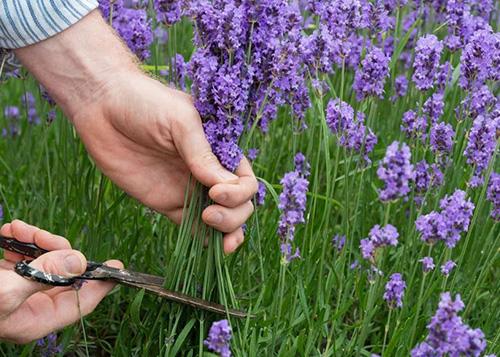
Often grown for its beautiful purple flowers, lavender is a colorful addition to your home garden. Lavender is difficult to start from seed but once you get it going it is easy to care for. Originally from the Mediterranean region, lavender likes hot, dry weather though there are varieties adapted to every climate. For tea, you want to use the buds and flowers. Pick them fresh to add directly to your tea or dry them to save for later.
To dry, cut the stalks close to the ground and tie together in a bundle. Hang upside down in a cool dark place until they are dry. Carefully separate the flowers and buds from the stems and store them in an airtight container to use throughout the year. Lavender helps increase circulation which in turn can help calm your aching head. Some people find that lavender has a “soapy” scent. If it bothers you simply reduce the quantity in the tea.
Peppermint, Lavender, Chamomile Tea
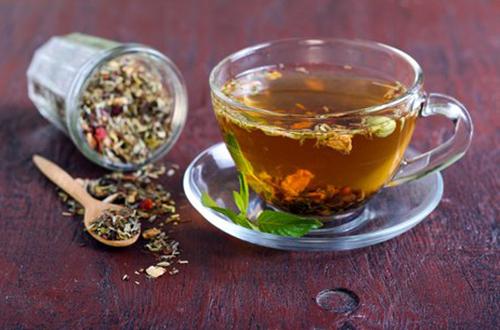
- Use two parts peppermint and chamomile to one part lavender
- You can use fresh or dried peppermint and lavender but chamomile flowers should be dried
- For fresh herbs use two tablespoons of the herbal mixture for one 8 ounce cup of tea
- With dry herbs use one tablespoon of the herbal mixture one 8 ounce cup of tea
- Place the herbal mixture in a tea ball, reusable tea bag, or wrap in a piece of cheesecloth
- Pour boiling water over the tea mixture and let steep from 3-8 minutes depending on how strong you like your tea
- Remove the herbs. If using a tea bag or piece of cloth press with a spoon to gently remove any liquid from the herbs
- Sweeten with honey or your choice of other natural sweeteners if desired
You should begin to feel better within 30 minutes of consuming the tea. Feel free to drink another cup if the symptoms do not subside or return.
You may also like:
 10 Teas That should Always be In Your Cupboard
10 Teas That should Always be In Your Cupboard
Stop Spending Money At The Pharmacy By Growing These 10 Plants (Video)

If you have ragweed allergies isn’t chamomile in the family can I just eliminate that in the tea for headaches
Hi Silvia,
Thank you for your comment.
Yes, you can simply eliminate the chamomile. Peppermint and Lavender should be strong enough for a mild headache.
Or you can replace it with Lemon balm or Passionflower.
Lemon balm is a member of the mint family, unlike chamomile.
Passionflower comes from a herb that belongs to the same genus as passion fruit; The passionflower herb is made up of the plant’s leaves and stems rather than the fruit. It offers a slightly stronger sedative effect when compared to chamomile.
God bless!
Hi, my father-in-law suffers from painful migraines. Do you recommend this tea mixture for migraines?
Hi Amy,
Thank you for your comment.
Yes, the tea should be strong enough for migraine relief.
You should however, consult a doctor if you:
Have three or more headaches per week
Have headaches that keep getting worse and won’t go away
God bless!
What kind of lavender is the best. I have Provence and my flowers don’t look like that picture.
Hi I live in elmira new york. the problem is getting organically grown seeds to plant yur own gardens. seeds that are not gmo and or poisoned while collecting. where can we get seeds that are healthy for us. thank you so much for your time.
Try online.. http://www.groworganic.com or Bakers seeds…
https://www.groworganic.com/